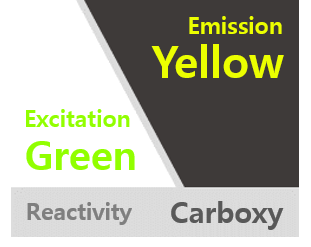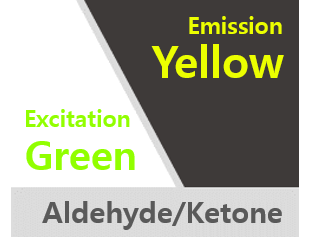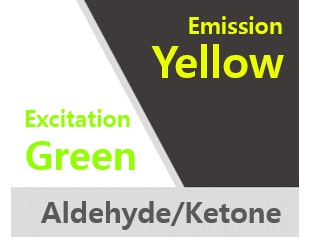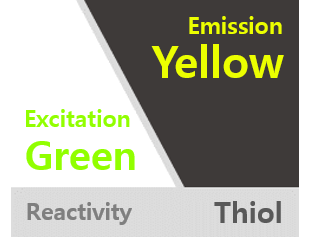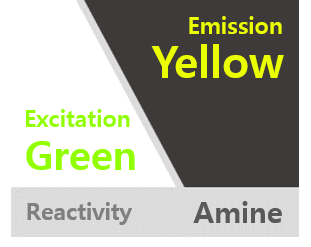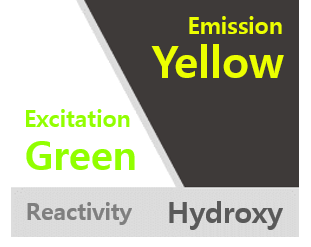
TAMRA Amine
| PACKING UNIT | price |
Lead time |
|---|---|---|
| 1 mg | $125.00 | |
| 5 mg | $287.00 | |
| 25 mg | $569.00 |
Description
TAMRA Amine is an inactive form of bright yellow dye that used to generate a stable fluorescence signal in bioimaging. The maxima of Ex/Em values are at 553/575 nm, similar to that of DyLight 549, ATTO 550 and Cy 3. TAMRA might be excited using 543 or 546 nm laser line and displays good optical property. TAMRA amine can be coupled with carboxylic acids at small molecules or on biomolecules by standard amide bond coupling conditions or can be utilized as a reference standard for dye-conjugates.
Citation & Reference
1. Hong H, Highly efficient site-specific protein modification using tyrosinase from streptomyces avermitilis: Structural insight. International Journal of Biological Macromolecules. 2024 Jan;255:128313.
2. Wu C, Investigation into the mechanism of action of the antimicrobial peptide epilancin 15x. Frontiers in Microbiology. 2023 Nov 2;14.
3. Troy A. Walton. Evaluation of New Linkers and Synthetic Methods for Internal Modified Oligonucleotides. Bioconjugate Chem 13.5 (2002): 1155-1158.
4. Matthew H. Lyttle. A Tetramethyl Rhodamine (Tamra) Phosphoramidite Facilitates Solid-Phase-Supported Synthesis of 5‘-Tamra DNA. J. Org. Chem 65.26 (2000): 9033-9038.
OPTION
Total

 log
log My
My Contact
Contact


